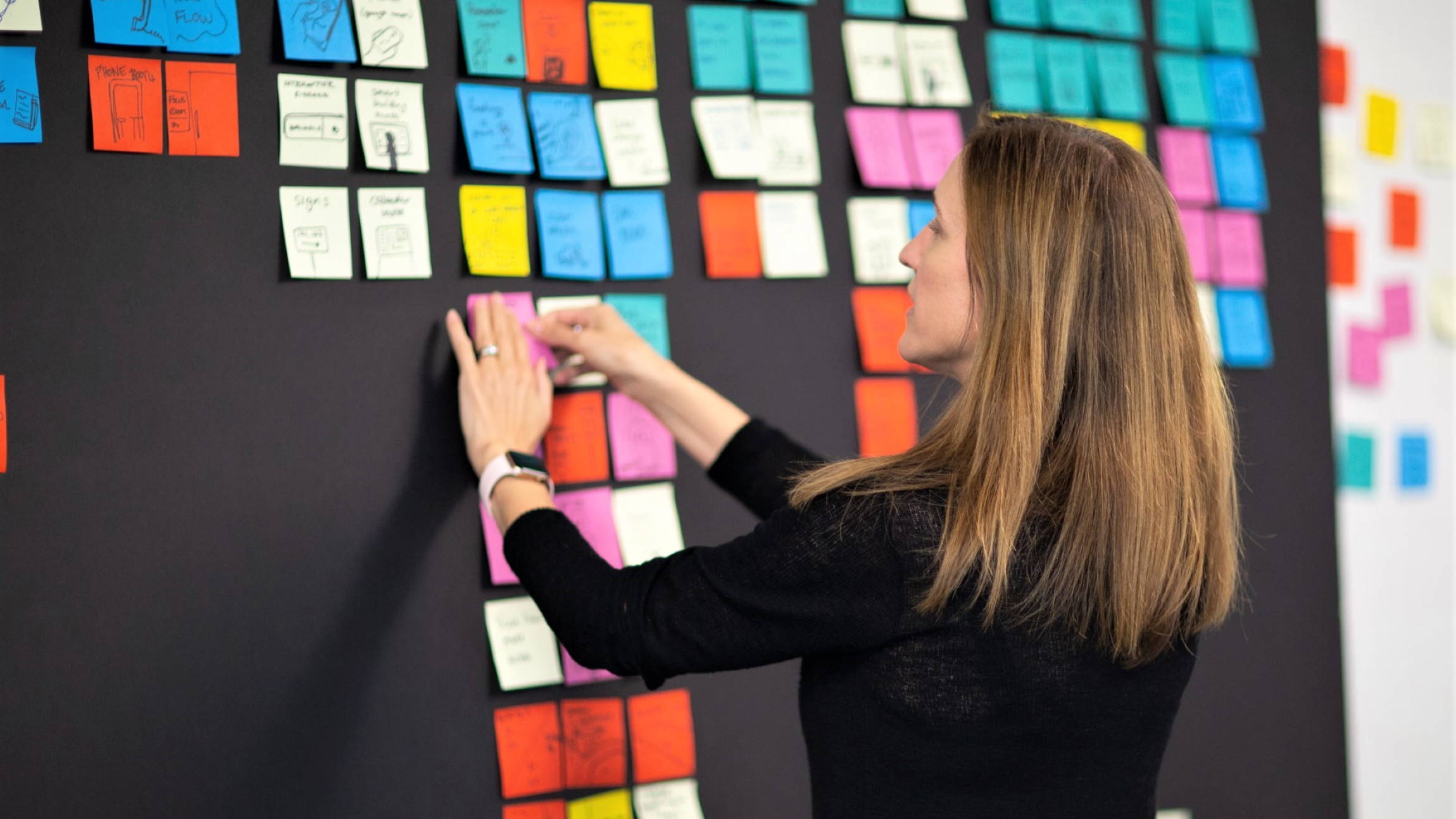 Editor’s note: We’ve republished this blog with a new companion video.
Editor’s note: We’ve republished this blog with a new companion video.
Adopting rigorous design standards is helping Microsoft get better at something very important to the company—getting accessibility right inside its own walls.
Microsoft’s journey to transform its approach to accessibility started when Microsoft CEO Satya Nadella took the helm in 2014, says Tricia Fejfar, partner director of user experience in Microsoft Digital, the organization that powers, protects, and transforms Microsoft. Nadella sharpened the company’s focus on accessibility in 2017, when he penned a moving essay describing his experience raising a child with cerebral palsy.
“That really got us thinking about accessibility internally,” Fejfar says. “Employees are more productive and engaged when they have simple, easy-to-use tools, and accessibility is a very important part of that DNA.”
More than 1 billion people on the planet identify as having some form of a disability, so building experiences that are accessible to all Microsoft employees makes a difference every day.

“Being able to do my job at Microsoft based on my skills and not be blocked by my blindness has made a big difference in my life,” says Manish Agrawal, a senior program manager for the Accessibility team within Microsoft Digital.
Agrawal, who is blind, works to make Microsoft products more accessible to people with disabilities. It’s about creating an inclusive work environment where everyone can succeed.
“For me, it’s not just about making products accessible for Microsoft employees to help them get their work done,” he says. “It’s also about supporting employees with disabilities and ensuring that Microsoft builds a diverse and inclusive workforce across the spectrum of abilities.”
Fejfar adds, “Designing for and building experiences that reflect the diversity of the people who use them makes sure we put our people at the center of our work. Until people recognize that, and honor it in the work they do, they can’t begin to make sure what they build will take care of everyone’s needs.”
It’s about understanding why you build something and who will use it. Microsoft calls it being human-centric and customer obsessed.
“Building accessible experiences is not a compliance effort or a checklist of guidelines,” Fejfar says. “It’s about thinking of the user at all stages of the development process so you build usable, delightful, and cohesive end-to-end experiences.”
Hiring and supporting people with disabilities makes good sense for the company and helps attract top talent.
“Millennials choose employers who reflect their values, and diversity and inclusion are at the top of their list,” Fejfar says. “They make up 75 percent of the global workforce.”
Making a difference in the lives of people like Agrawal is what brings people to the Accessibility team, Fejfar says. “We’re here because we want to make sure the internal products that our employees use every day are accessible,” she says.
[Find out how building inclusive, accessible experiences at Microsoft is a catalyst for digital transformation. Learn how Microsoft enables remote work for its employees.]
Adopting a coherent design system
Nadella sharing his story led to a company-wide pivot toward accessibility and improving employability for people with disabilities at Microsoft. One of the initiatives connected to this goal was creating a set of coherence design standards that teams can use each time they builds new tools and services for employees.
“Using a coherent design language reduces engineering costs while increasing engineering efficiency,” Fejfar says. “That makes what we build predictable to our users, which increases engagement and builds trust.”
Microsoft Digital’s design system is built on top of Fluent, Microsoft’s externally facing design language, which makes it feel more like Microsoft.
“Building coherently means something very specific to us,” Fejfar says. “It means designing and coding accessible and reusable UI components, interaction patterns, brand, and other guidelines to build predictable experiences for our employees.”
These design standards have allowed Microsoft to not only consider accessibility as part of every internal project. They also consider accessibility at every step along the way, from idea, to construction, to release. That makes its products accessible to as wide a range of people as possible, which creates new opportunities and better experiences for everyone who works at Microsoft.
Accessible design benefits everyone
Agrawal cites closed captioning as an example of a widely useful accessibility tool that is now used for far more than helping people with hearing impairments watch TV or follow a presentation. Creative uses of the capability include helping audiences understand someone with a heavy accent, following along on TVs placed in loud environments like airports and bars, or allowing someone to watch TV while their partner sleeps.
In fact, closed captions or subtitles are so popular with the general population that game maker Ubisoft reported that more than 95 percent of the people who play their popular Assassin’s Creed Odyssey game keep subtitles turned on. “When you build for accessibility, you end up building a much more compelling product,” Agrawal says.
Moreover, it’s simply good business sense to ensure that talented people such as Agrawal are empowered to make a significant contribution to companies such as Microsoft.
“We need to make sure all the applications and experiences that we build empower everyone who works here to not only do their work, but to have full, rich experiences while they’re at work,” Fejfar says. “Without accessible tools, people can’t do their best work, and if people can’t do their best work, our company, our culture, and our customers are directly impacted.”
For a transcript, please view the video on YouTube: https://www.youtube.com/watch?v=XhN1tnBcYLo, select the “More actions” button (three dots icon) below the video, and then select “Show transcript.”Designing new employee experiences
One telling example of Microsoft Digital’s coherent design approach to accessibility is Microsoft MyHub, a new one-stop shop for employees to get their “at work” stuff done at work, like getting worksite access, taking time off, checking stock rewards, and finding out what holidays are upcoming.
It was also vital to make sure the app experience would be fully accessible, says Bing Zhu, principal design manager in Microsoft Digital’s Studio UX team.
“Before we built the app, our employees had to deal with as many as five to eight different tools almost every day,” Zhu says. “Each experience was different than the last one, and not all of them were as accessible as we needed them to be.”
This fragmented experience was difficult for everyone to navigate and very hard to keep accessible for people with disabilities.
“We used our coherent design system to build a unified, consistent, and accessible experience for our employees,” Zhu says. “Using that as our guide, we were able to design an application that all Microsoft employees can use.”
Not only is Microsoft MyHub compliant with Web Content Accessibility Guidelines (WCAG), but it also received a strong usability grade by employees with a spectrum of vision disabilities.
Crucially, the new app was built with accessibility in mind at every stage of its development cycle, Agrawal says.
“We reviewed the design for every feature for accessibility and beta tested the app’s accessibility every time a new feature was implemented,” he says. “We made sure it was accessible for all of our users at each step in the development process.”
One example of how the team that built Microsoft MyHub was guided by Microsoft Digital’s coherence design system was in how it made every interaction and visual element accessible.
“Our coherence design system—which is an extension of Microsoft’s Fluent design system—alongside the accessibility guidance that we provide, helped the MyHub team start incorporating accessibility into their app from the get-go,” says Anna Zaremba, a senior designer on Microsoft Digital’s Coherence team. “Our coherence design system provides components with built-in accessibility that Microsoft Digital’s product teams, like the team that built MyHub, use to create their experiences.”
Work that makes a difference
It’s striking to hear employees in Microsoft Digital talk about the deep satisfaction they take from making products more accessible.
“The greatest reward is hearing from people who have benefitted from our work,” Zaremba says. “I really like the fact that we are doing work that helps the entire company and drives a greater awareness of accessibility.”
Though Microsoft is among the companies pushing hard to build accessibility into everything it does, there is still much work to do. One in 10 people who identify as having some form of disability don’t have the assistive technology they need to fully participate in work and society.
Going forward, Microsoft Digital will continue designing with accessibility as a top priority, using the developmental model it uses to build solutions like Microsoft MyHub as a template for creating the company’s next generation of employee tools.
“We’re still learning this process ourselves,” Zhu says. “We’re figuring out how to make accessibility and design work with program managers and engineers to create even more opportunities for access. It’s an exciting challenge.”
And one that will open doors for Microsoft employees—and others.
“I really love building software anyway,” Agrawal says. “But it’s great to be part of a team that is working to make Microsoft a more inclusive place to work. It has a real impact on people’s lives.”

- October is National Disability Employment Awareness Month 2020—learn more about the 75th anniversary of this event in the US here.
- Read how Microsoft is sharing how many of its employees identify as having some form of disability.
- Read how people with disabilities shape technology people use every day.
- Find out how building inclusive, accessible experiences at Microsoft is a catalyst for digital transformation.
- Learn how Microsoft enables remote work for its employees.
Tags: accessibility, design coherence, developer tools, Enterprise Mobility and Security, transformation








